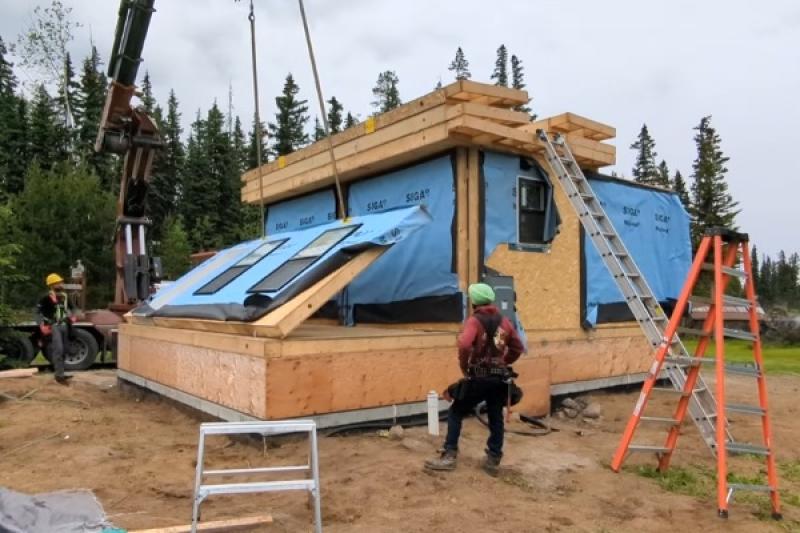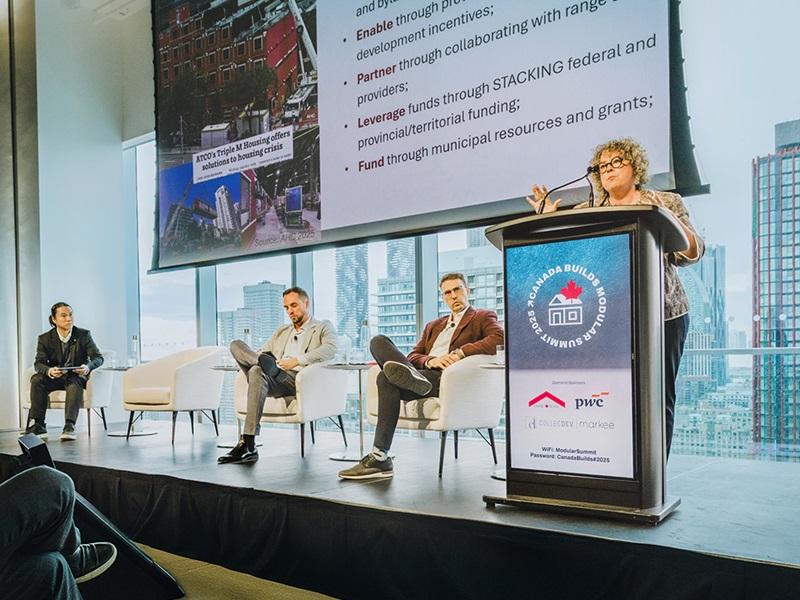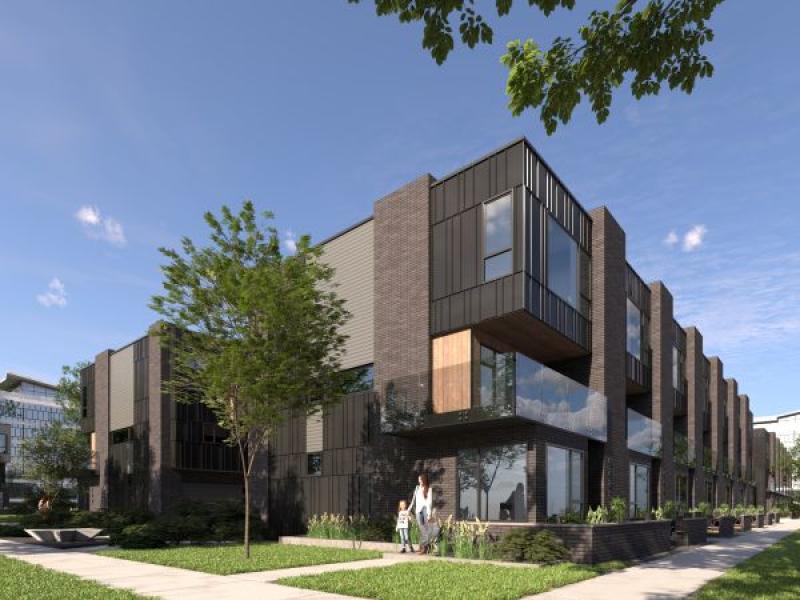
Foldable phones are no longer a fantasy but a mainstream device in people’s pockets. If Vancouver-based Rohe Homes Ltd. has its way, we may also see a lot more foldable homes arriving in our neighbourhoods.
A construction technology company on a mission to provide accessible housing, Rohe (pronounced “row”) assembles and distributes building envelopes from its South Surrey facility, providing collapsible housing. In one example, the envelope for a 500-square-foot home is compressed up to a third of its size.
Once at site, the home is unfolded and erected in four to six hours, a substantial shrinking of construction time over traditional means.
Co-founded in 2018 by Rohan Kulkarni and Salik Z. Khan, the idea for Rohe emerged from Kulkarni, an architect who is the company’s CEO. A visit to his father’s village in India showed him the urgent need for housing in rural communities.
He emerged motivated to solve the question of “How can we get construction out to these more remote communities, being able to deploy housing in a quick and efficient way?” he told RENX Homes.
Seeing the gap in the market for a systematic housing construction technology, Kulkarni settled on prefabrication and took an interest in a foldable modular system. Khan, the company’s chief experience officer, said Rohe’s method is at the intersection of prefabricated, modular and factory-built housing.
While it was formed mainly in response to the needs of rural residents, Rohe has evolved to serve both the rural and urban markets of British Columbia. As it grows, Rohe hopes to expand across Canada and the U.S., and build larger, multi-unit housing.
'Shipping the box'
First, Rohe works with the client on an early design, using a panelized, standardized system drawing on a “library” of modular components.
Once the design is finalized, parts made by its network of third-party manufacturers are assembled and finished into home envelopes by local trades at its 14,000-square-foot South Surrey facility.
The envelopes include plumbing and electrical systems, plus framing, windows and doors. Its versatile system can create envelopes for models ranging from a 500-square-foot cabin or laneway home, a three- to four-storey woodframe home, or a 4,000 square-foot duplex in Vancouver, the largest build it has done to date.
Once finished, the collapsible modules are loaded onto a truck and shipped to the site. Lifted and placed using a crane, the envelope is structurally tied, then unfurled like an elaborate pop-up book. Local contractors finish the home.
Its process, Kulkarni said, is faster and more economical than most construction methods.
A 1,200-square-foot home will take approximately four weeks to assemble. When deploying an accessory dwelling unit (ADU), also known as a backyard unit or garden suite, Rohe will need half as much time as the typical 19 to 24 months.
An additional set of benefits is slashing needs for on-site fencing and security while generating less construction waste, Khan added.
“We’re just shipping the box, we’re unfolding it, and then taking our materials away,” he summarized.
The price of a project is about 10 per cent cheaper because of the time savings and reduction in on-site work, Kulkarni said.
Maximizing land value with shippable homes
Rohe can ship its envelopes across British Columbia, with its main markets being the Lower Mainland and Kelowna, Kulkarni said. Last year, the company sold six homes.
Customers are often rural landowners building secondary units on their properties, used as intergenerational dwellings, rental properties or a vacation house.
Among its offerings are accessory dwelling units such as the Lotus Mini, a 530-square-foot, one-bedroom home, starting at $127,500. Another product in its Lotus line is the Rancher, a 1,050-square-foot, three-bedroom home that starts at $235,000.
While the high prices of the Toronto and Vancouver housing markets grab most of the attention, many rural areas of Canada are also facing a housing cost crisis, Khan said, burdened with limited rental vacancy and material and construction labour shortages.
With much of the work done off-site, Rohe can alleviate the strain on local trades and construction workers.
But Rohe does not pigeonhole itself into serving purely rural communities. The company is open to serving anyone “who want to maximize their land value,” Kulkarni said, and is getting demand for backyard units from clients in towns and cities such as Squamish and South Surrey.
As it grows and becomes more comfortable, Rohe is looking to produce larger homes such as a 1,200-square-foot, two-storey laneway product, and multiplexes designed by local architects.
The U.S. Pacific Northwest and Toronto are markets Rohe is aiming to enter, as it looks ahead to further growth. Toronto in particular stands out because the city shares many of the same housing problems and opportunities as Vancouver, he added.
“We see a lot of similarities with how the zoning, the bylaws and all the multiple requirements are similar to Vancouver. So we feel like it would be a great fit.”










